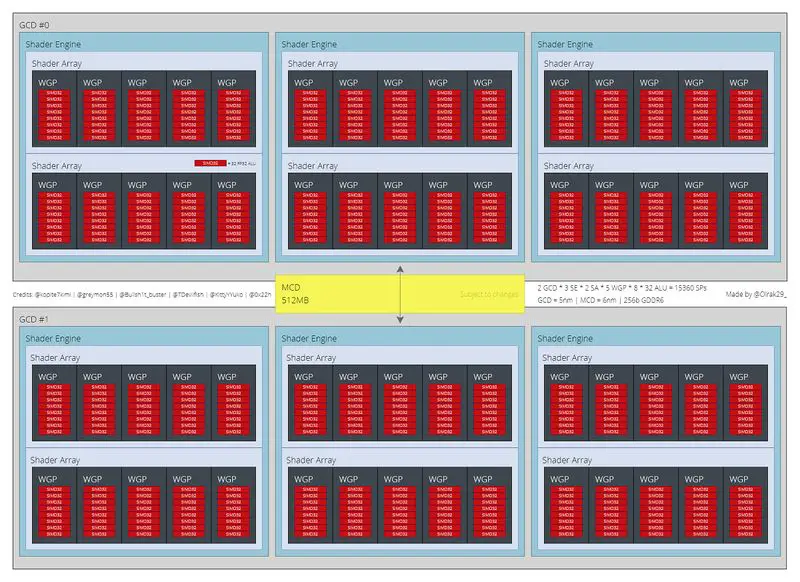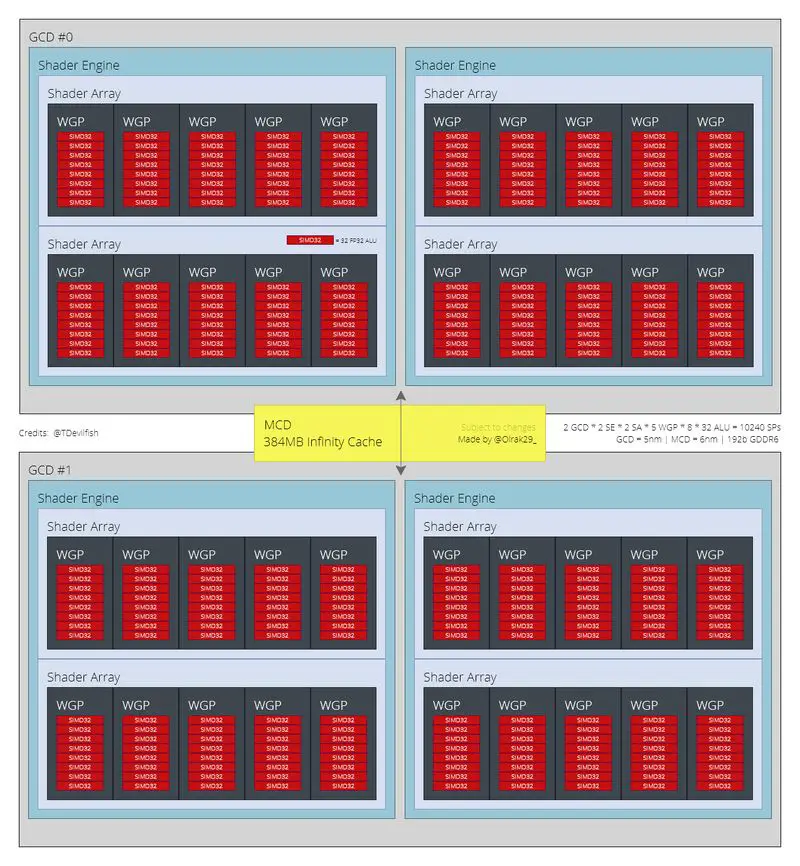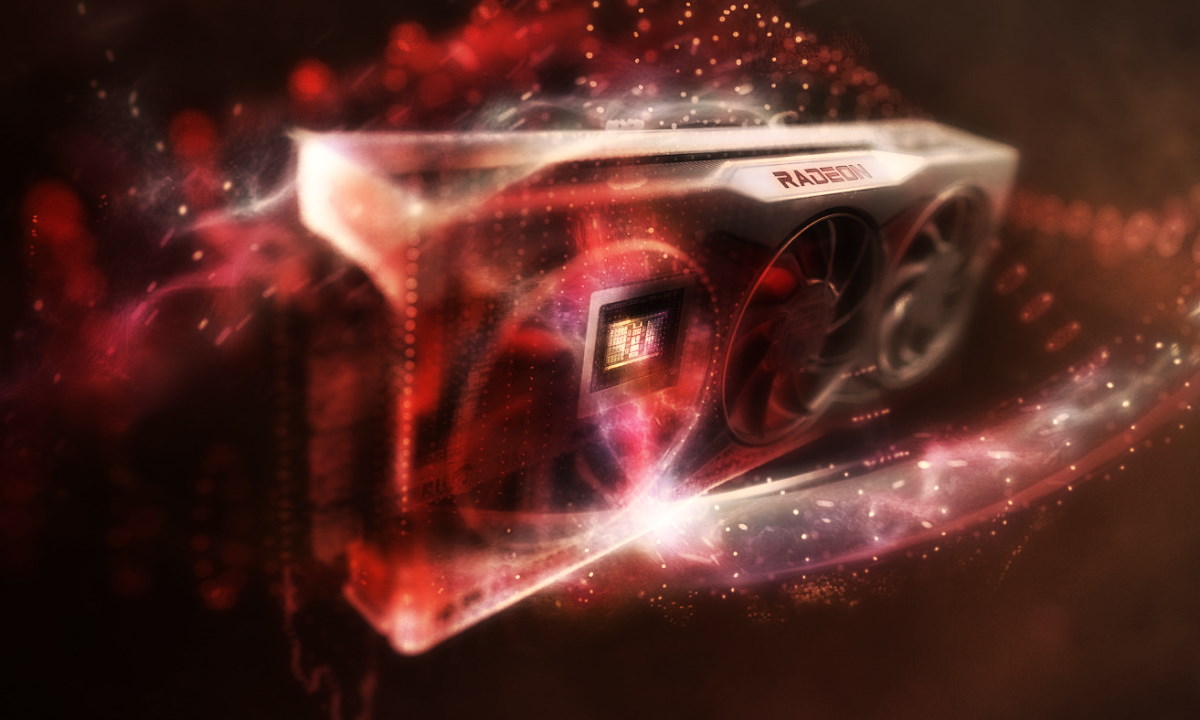The RDNA 3 architecture will power the Radeon RX 7900 XT, Radeon RX 7800 XT, and Radeon RX 7800, and will also be present in the Radeon RX 7700 XT and Radeon RX 7600 XT. According to the latest information we’ve been able to read, AMD will be making the jump to an MCM design, but with nuances, as it will maintain, in theory, a monolithic core design in the Radeon RX 7600 XT and below.
But transferring a chip with 15,360 shaders to the wafer will be much more complex and costly than transferring a chip with 7,680 shaders to the wafer. In the former case, there is a greater chance of getting a high number of non-functional chips, i.e. GPUs that don’t come out with all those shaders running smoothly. That would, in theory, be the shader count of the Radeon RX 7900 XT.
Under a monolithic core design, chip option may be with 15,360 shaders, and it would be very challenging to get a high success rate on the water. By contrast, with an MCM design, it is possible to combine two 7,680-shader chips to create a 15,360-shader GPU, while maintaining a lower on-wafer cost due to the greater simplicity of that chip, which will result in more functional units per wafer.
For graphics cards with a lower shader count, such as mid-range and low-end, the MCM model would not carry as much weight, as the chips needed to manufacture them would be perfectly viable, both economically and technically, under a monolithic core design. This helps us understand why the Radeon RX 7700 XT would indeed have an MCM design, while the Radeon RX 7600 XT will retain a monolithic core GPU.

Possible specs of Radeon RX 7700 XT and Radeon RX 7600 XT
Looking at the possible specs of AMD Radeon RX 7700 XT and Radeon RX 7600 XT; the former will be an upper-mid-range graphics card based on the Navi 32 graphics core and will use an MCM architecture, while the latter will be a mid-range graphics card based on the Navi 33 chip, and will maintain a monolithic core architecture.
Both will be manufactured on a 5nm process, although the possibility of AMD resorting to the 6nm process to free up TSMC a bit is not ruled out. The Radeon RX 7700 XT will feature:
- MCM architecture in 5nm/6nm.
- Two interconnected GPUs, each chip will have 5,120 shaders, leaving 10,240 shaders in total.
- 160 CUs (computing units, 80 per chip).
- 160 ray tracing acceleration units, if AMD keeps the base we have seen in RDNA 2.
- 192-bit bus.
- 384MB infinite cache.
- GDDR6 memory (quantity and speed not specified).
- TBP (total board power consumption) of about 300W.

For its part, the Radeon RX 7600 XT would have a much more modest configuration, although if the specifications we are going to see are met there is no doubt that it would be very powerful, even for a mid-range model. These are its keys:
- Monolithic core architecture in 5nm/6nm.
- GPU with 5,120 shaders.
- 80 CUs (computing units).
- 80 ray tracing acceleration units, if AMD keeps the base we have seen in RDNA 2.
- 128-bit bus.
- 384MB infinite cache.
- GDDR6 memory (quantity and speed not specified).
- TBP (total board power consumption) of about 200W.
Although some rumors are starting to say that the first graphics cards based on the RDNA 3 architecture will arrive later this year, we think it is clear that it makes no sense at all. This is a date that is practically just around the corner, and AMD has just introduced the Radeon RX 6600 XT.
Ignore these reports, the first RDNA 3-based graphics cards will most likely arrive in the second half of 2022, with the Radeon RX 7700 XT and RX 7600 XT debuting between the end of 2022 and the beginning of next year.





